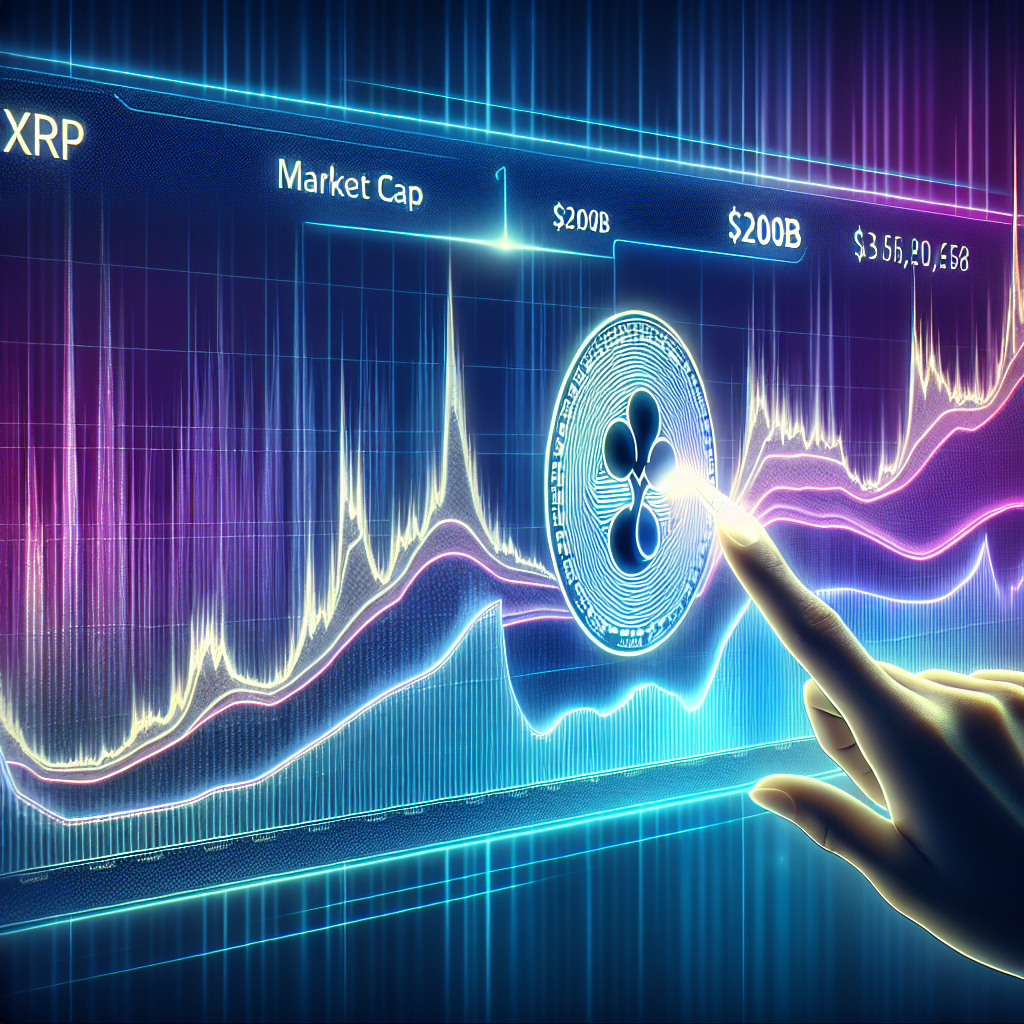Citigroup Weighs Stablecoin, Crypto ETF Custody amid Upbeat US Regulations

Citigroup Weighs Stablecoin, Crypto ETF Custody amid Upbeat US Regulations
[current-date] - In a significant move reflecting the increasing institutional interest in digital assets, Citigroup is reportedly exploring offering custody services for stablecoins and potentially crypto ETFs. This development coincides with growing regulatory clarity in the United States, particularly following the enactment of the GENIUS Act, which provides a comprehensive framework for stablecoins. This potential entry of a major financial institution like Citigroup into the crypto custody space underscores the maturation of the digital asset market and the growing acceptance of cryptocurrencies and related financial products within the traditional financial system.
Stablecoin {PRICE} Analysis: Regulatory Tailwind Fuels Optimism
As of June 25, 2024, at approximately 3:30 PM EST, Tether (USDT), the leading stablecoin, is trading at $1.00001. This price reflects its intended peg to the U.S. dollar. You can view the live price and related data here.
Recent Price Action and Influencing Factors
Stablecoins, designed to maintain a stable value, have recently been the focus of significant developments:
Stablecoins, like Tether (USDT) are inherently designed to minimize price fluctuations, maintaining a near-perfect peg to a fiat currency, typically the US dollar. Recent price action, therefore, involves monitoring deviations from this peg and understanding the factors that cause even minor shifts. USDT has largely remained stable at around $1.00 in recent days, but events like regulatory news, significant market volatility in other cryptocurrencies, or announcements regarding Tether's reserves can cause small price movements.
Regulatory Developments: The U.S. has enacted the GENIUS Act, establishing a comprehensive federal framework for stablecoins, including full reserve backing requirements and monthly audits. This regulatory clarity is expected to accelerate institutional adoption and mainstream integration of dollar-backed stablecoins. (en.wikipedia.org)
Market Dynamics: Tether (USDT) continues to dominate the stablecoin market with a market capitalization of approximately $144 billion, while USD Coin (USDC) follows with around $59 billion. The overall stablecoin market has grown by over 56% year-over-year, indicating increasing adoption and integration into the financial system. (stablecoin.com)
These developments highlight the evolving landscape of stablecoins, influenced by regulatory advancements and market growth.
Recent factors influencing stablecoin market dynamics include the ongoing debate surrounding the composition of reserves backing stablecoins. Scrutiny over the transparency and liquidity of these reserves has intensified following past events involving algorithmic stablecoins and their destabilization. The market also closely watches regulatory announcements and pronouncements from agencies like the SEC, as these can significantly impact investor sentiment and market structure. Moreover, the increasing use of stablecoins in decentralized finance (DeFi) protocols makes the price and stability of these assets crucial for the health of the overall DeFi ecosystem.
Technical Chart Patterns
Due to the nature of stablecoins, traditional technical analysis is not as directly applicable as it is for volatile cryptocurrencies. However, analyzing stablecoin price charts can still provide insights into moments of instability or deviations from the peg.
Small Deviations and Consolidation Patterns: When observing USDT's chart, look for periods where the price deviates slightly from $1.00. These deviations can form minor consolidation patterns, such as small triangles or flags, indicating periods of price correction or stabilization after a brief movement away from the peg.
Spike Analysis: Look for unusual price spikes or drops that might indicate external factors influencing the peg. These spikes can be sharp, V-shaped recoveries or sudden dips followed by immediate rebounds. Analyzing these events can shed light on potential causes, such as exchange-specific issues or flash crashes.
Key Support and Resistance Levels
For stablecoins, the primary support and resistance level is the peg itself, which is typically $1.00 for USD-pegged stablecoins like USDT. However, deviations from this level can identify temporary support and resistance zones.
Immediate Support: $0.9998 - This represents a level where buyers are likely to step in and prevent further downward deviation from the $1 peg. A break below this level could signal temporary instability.
Immediate Resistance: $1.0002 - This is a level where sellers might take profits, preventing the price from exceeding the $1 peg. A sustained break above this level could suggest stronger demand or temporary weakening of the peg mechanism.
Significant Support: $0.9990 - A breach of this level could indicate a more serious loss of confidence in the stablecoin and might trigger further selling.
Significant Resistance: $1.0010 - Overcoming this resistance level would require strong buying pressure and could suggest a temporary premium on the stablecoin due to high demand or perceived security.
Technical Indicators
While typical technical indicators are less useful for stablecoins, certain modifications and interpretations can still offer valuable insights:
1. Moving Averages (MA): Short-term moving averages (e.g., 5-day or 10-day MA) can be used to identify minor trends or deviations from the peg. For instance, if the price consistently trades above the 5-day MA, it may suggest a slight upward bias or increased demand. Crossovers between short-term MAs and the $1 level can signal potential shifts in market sentiment.
2. Relative Strength Index (RSI): The RSI can be used to identify overbought or oversold conditions even in stablecoins. If the RSI exceeds 70, it could indicate that the stablecoin is trading at a slight premium and might be due for a correction back to its peg. Conversely, if the RSI falls below 30, it could suggest that the stablecoin is undervalued and might attract buyers looking to capitalize on the dip.
3. Trading Volume: Analyzing trading volume can reveal periods of increased activity, which might coincide with news events, regulatory announcements, or shifts in market sentiment. High trading volume accompanied by a deviation from the peg could indicate increased uncertainty or speculation surrounding the stablecoin.
Market Sentiment and Fundamental Factors
The current market sentiment surrounding stablecoins is largely positive, driven by increasing regulatory clarity and growing adoption in the DeFi space. The enactment of the GENIUS Act in the U.S. has instilled greater confidence in stablecoins by establishing clear guidelines for their issuance and operation.
However, concerns remain regarding the transparency and composition of reserves backing stablecoins. Market participants closely monitor announcements from stablecoin issuers regarding their reserve holdings and any audits or attestations they undergo. Negative news or indications of insufficient reserves can quickly erode confidence and trigger a sell-off.
Broader market trends also play a role. During periods of heightened volatility in the broader cryptocurrency market, stablecoins often experience increased demand as investors seek a safe haven to park their funds. Conversely, during bullish periods, demand for stablecoins may decrease as investors rotate into riskier assets.
Potential Trading Strategies
While stablecoins are not typically used for speculative trading, there are still opportunities to capitalize on minor price fluctuations and market inefficiencies:
1. Arbitrage: Exploit price differences between different exchanges. If USDT is trading at a slightly higher price on one exchange compared to another, traders can buy USDT on the cheaper exchange and sell it on the more expensive exchange to profit from the difference.
2. De-Peg Speculation: Although risky, some traders may speculate on temporary de-pegging events. If a stablecoin's price deviates significantly from its peg due to a specific event, traders may attempt to profit by buying low and selling high when the price recovers. However, this strategy carries significant risk, as the stablecoin may not always recover its peg.
3. Yield Farming and Staking: Many DeFi platforms offer yield farming and staking opportunities for stablecoins. By depositing USDT into these platforms, traders can earn rewards in the form of additional tokens or interest payments. This strategy allows traders to generate passive income while holding stablecoins.
Short-Term Price Analysis
Bullish Scenario: If the positive market sentiment continues and USDT maintains its peg above $0.9998, it could indicate strong demand and stability. A potential target would be a sustained trade around $1.0002, reflecting a slight premium due to high demand.
Bearish Scenario: If concerns arise regarding Tether's reserves or if there is a broader market downturn, USDT could face selling pressure. A break below $0.9998 could lead to a test of the $0.9990 support level. If this level is breached, it could signal a more significant loss of confidence and potential for further downside.
Based on the current price and identified support/resistance levels, here’s a realistic short-term analysis for Tether (USDT):
Current Price: $1.00001 (as of June 25, 2024)
Bullish Scenario:
- If USDT can maintain its price above the $0.9998 support, it indicates stability and positive market sentiment.
- Short-term target: $1.0002 (reflecting a slight premium due to sustained demand).
- Catalyst: Positive news regarding Tether's reserves, regulatory clarity, or increased adoption in DeFi.
Bearish Scenario:
- If negative news emerges (e.g., concerns about Tether's reserves, regulatory scrutiny), USDT could face selling pressure.
- Key support level: $0.9998. A break below this level could lead to a test of $0.9990.
- If $0.9990 is breached, it may signal a loss of confidence and potential for further downside.
YouTube Video Analysis
Here are two relevant YouTube videos offering insights into data analysis, which, while not directly about stablecoin price action, provide valuable context for understanding market data and making informed decisions:
Video 1: Data Analyst on How to Turn Business Metrics to Insights
Video 2: Data Insights Ep. 0: How to Approach GMAT Data Insights
Citigroup's Potential Involvement
Citigroup's exploration of stablecoin and crypto ETF custody services is a significant validation of the digital asset space. As a major player in traditional finance, Citigroup's entry could attract more institutional investors and further legitimize cryptocurrencies as an asset class.
Custody Services: Providing custody services for stablecoins would involve securely storing and managing these digital assets on behalf of clients. This would require Citigroup to develop robust security protocols and compliance frameworks to ensure the safety and integrity of the assets under its custody.
Crypto ETF Custody: If Citigroup were to offer custody services for crypto ETFs, it would play a crucial role in the ETF ecosystem. Custodians are responsible for holding the underlying assets of the ETF, ensuring that they are properly accounted for and protected. This would involve managing the complex operational and regulatory requirements associated with crypto ETFs.
What This Could Mean
Citigroup's potential involvement in stablecoins and crypto ETFs could have several significant implications:
Increased Institutional Adoption: A major financial institution like Citigroup offering custody services would likely attract more institutional investors to the crypto market. These investors often require regulated and trusted custodians to safeguard their assets.
Enhanced Market Liquidity: Increased institutional participation could lead to greater liquidity in the crypto market, making it easier to buy and sell digital assets without significantly impacting prices.
Mainstream Integration: Citigroup's involvement could accelerate the integration of cryptocurrencies into the mainstream financial system. This could lead to the development of new financial products and services based on digital assets.
Regulatory Validation: Citigroup's entry into the crypto space could be seen as a validation of the regulatory efforts aimed at providing clarity and structure to the market. This could encourage other financial institutions to explore opportunities in the digital asset space.
Conclusion
The cryptocurrency market, including stablecoins, is inherently volatile and risky. The information provided in this analysis is for informational purposes only and should not be construed as financial advice. It is crucial to conduct independent research, consult with a qualified financial advisor, and use appropriate risk management techniques before making any investment decisions. The potential for rapid price swings and unforeseen events underscores the importance of exercising caution and carefully evaluating your risk tolerance before engaging in cryptocurrency trading. The growing institutional interest, exemplified by Citigroup's exploration of stablecoin and crypto ETF custody, signals a maturation of the market, but it does not eliminate the inherent risks involved.









